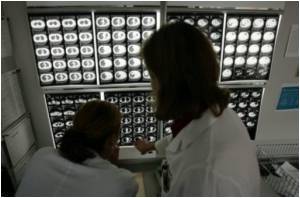In a new study published in the August 16th issue of Developmental Cell, researchers at NYU Langone Medical Center identified a molecular mechanism that guarantees

Using the zebrafish embryo as a model system, researchers identified that Semaphorin-PlexinD1 signaling limits the formation of new blood vessels. This signaling pathway works by ensuring that blood vessels make the proper levels of soluble Flt1. Soluble Flt1 is an inhibitor of the Vascular Endothelial Growth Factor (VEGF) pathway, which promotes the growth of new blood vessels.
These findings have broad implications for human health, since changes in the level of soluble Flt1 are associated with cancer, vascular birth defects and pregnancy-related hypertension (preeclampsia).
According to researchers, the Semaphorin-PlexinD1 signaling pathway shows significant promise as a future therapeutic target for cancer treatment to slow the progression of diseases by controlling the blood vessel growth.
 MEDINDIA
MEDINDIA




 Email
Email










